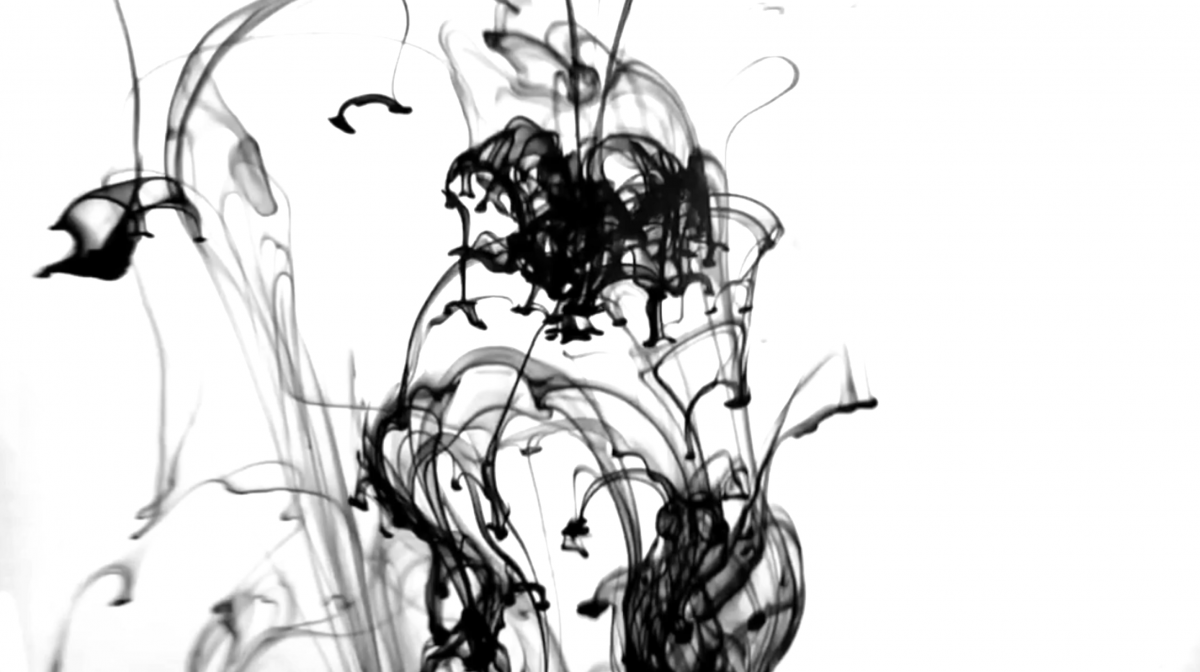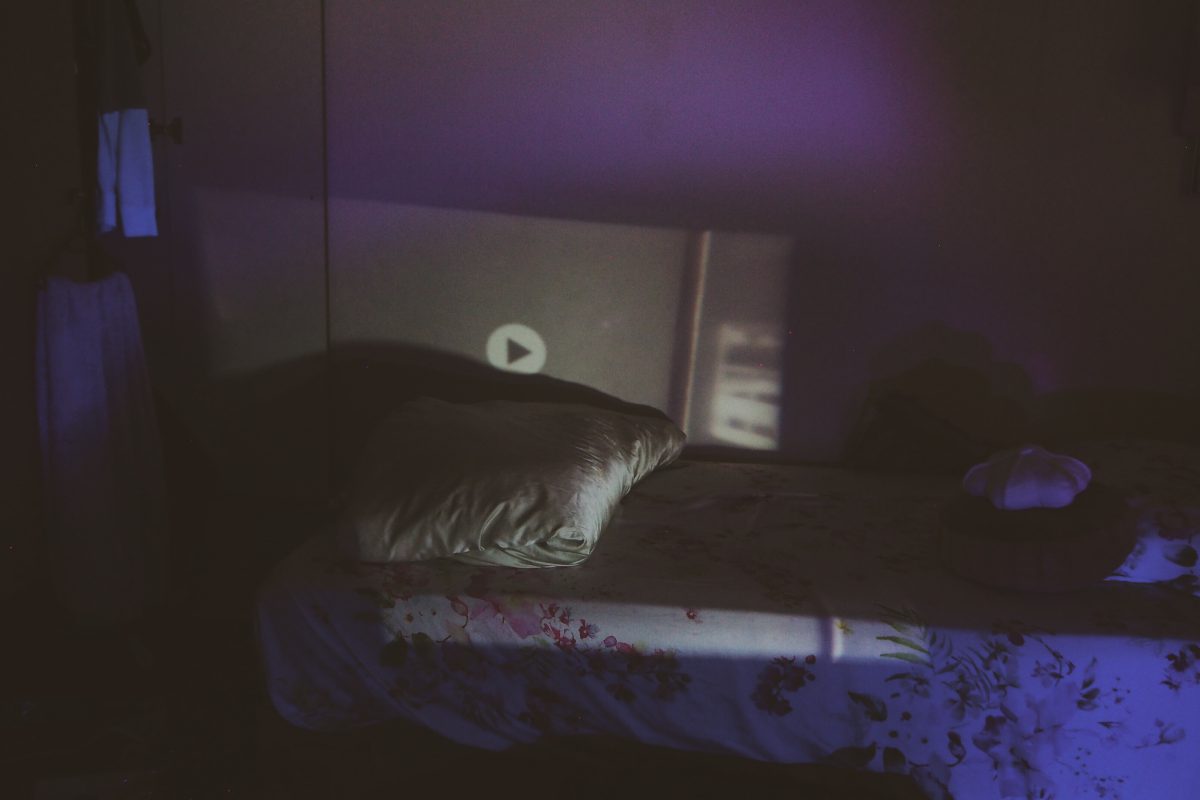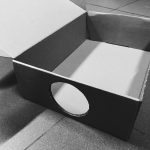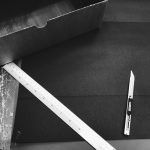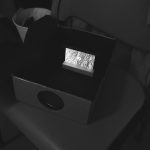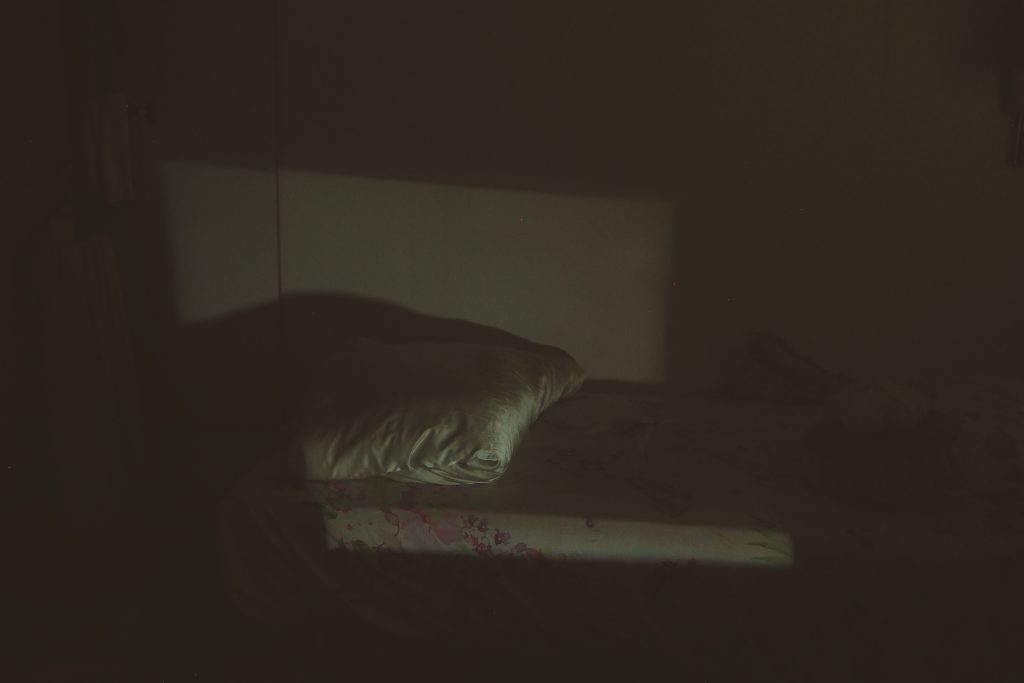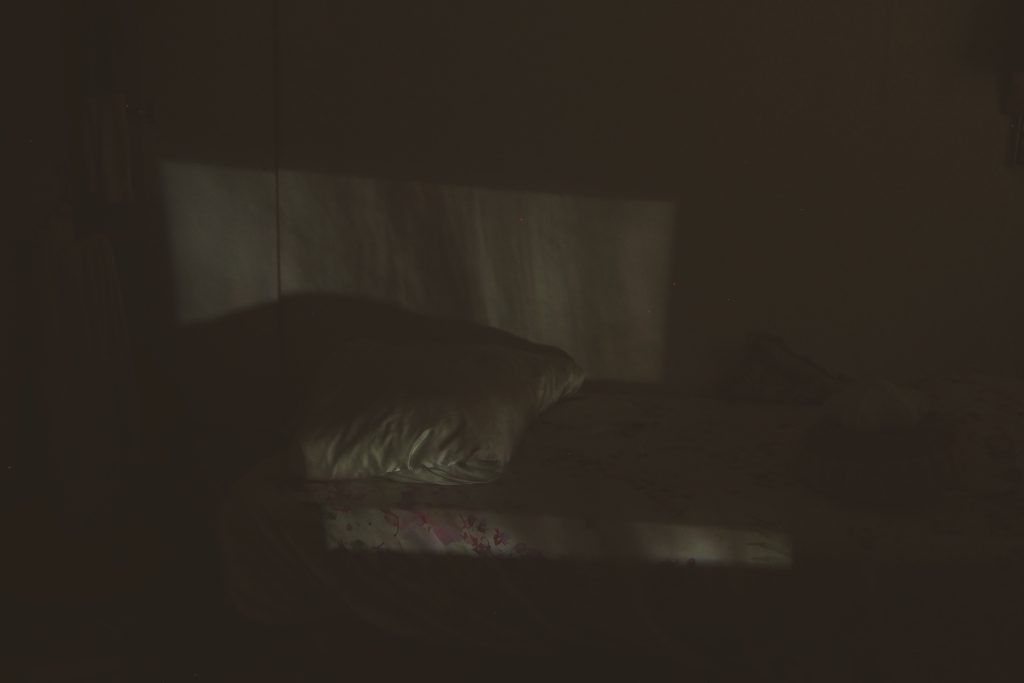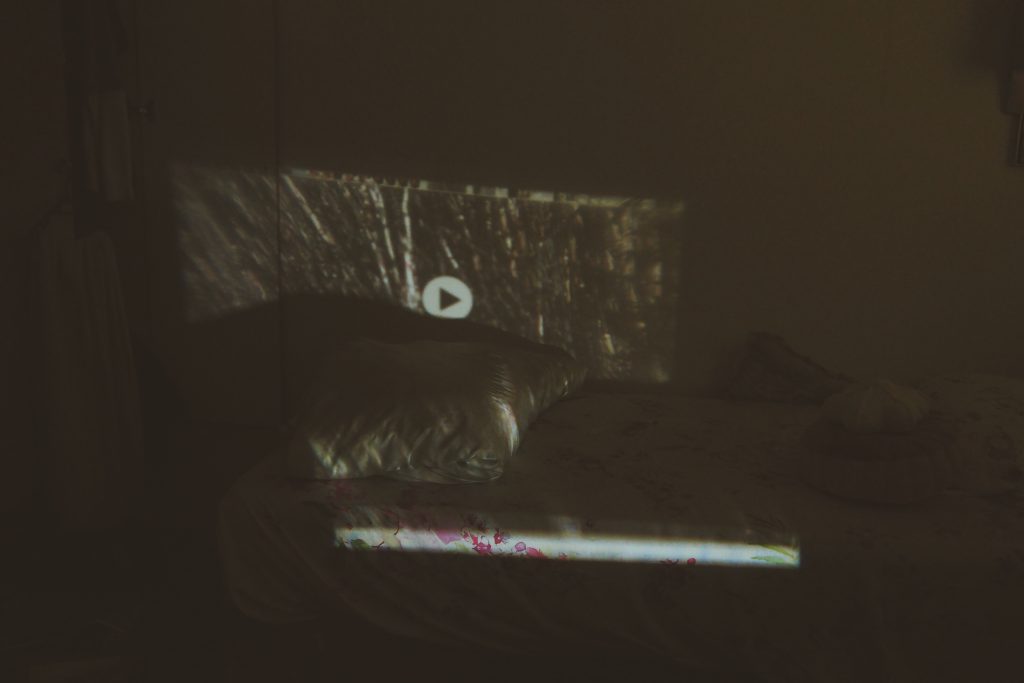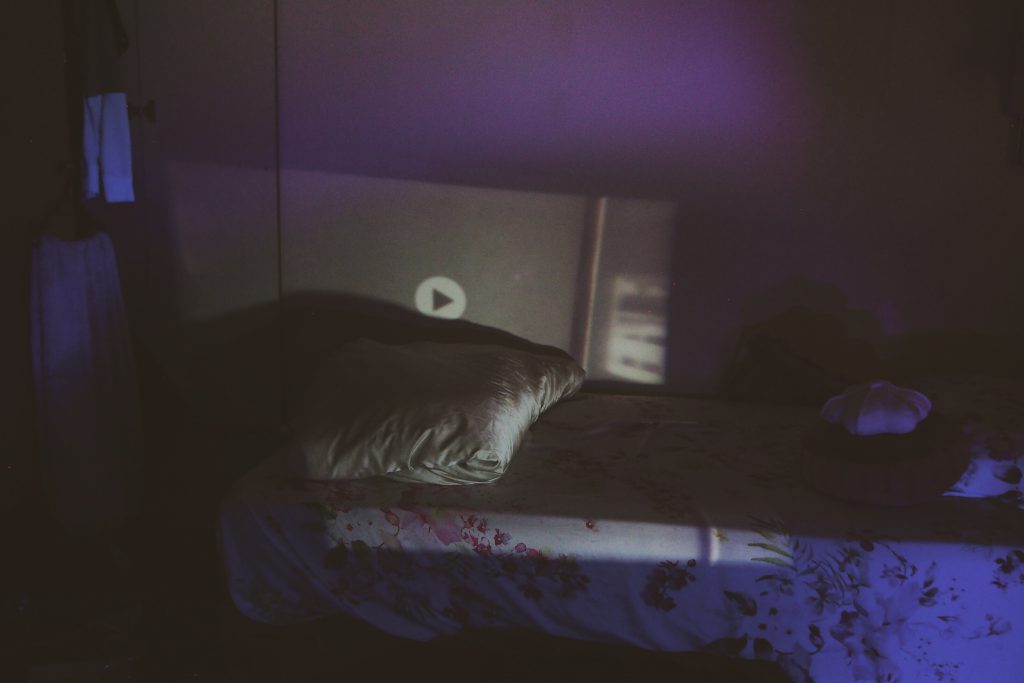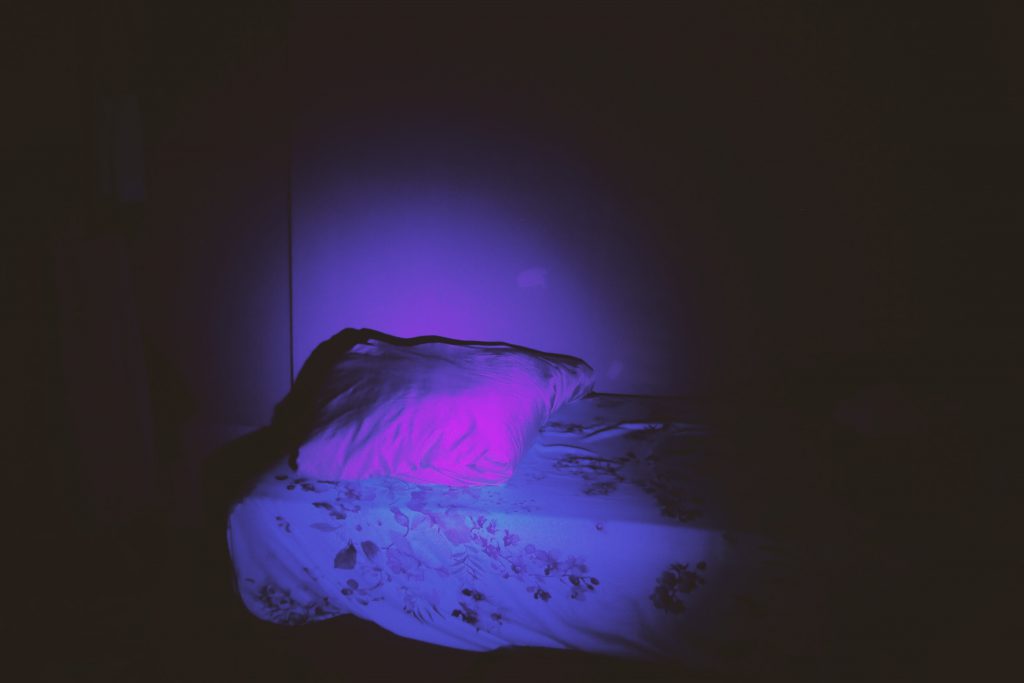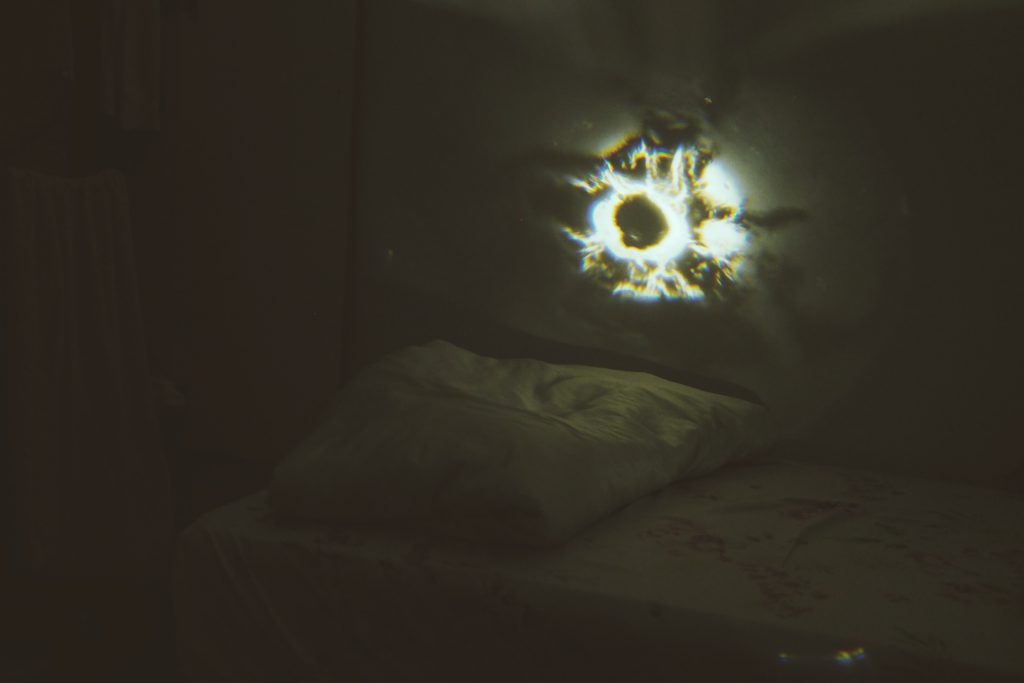In my sleep the universe told me to shoot ink drops falling into water, so I did.
Keeping in mind that these shots are what I wanted to project onto spaces, I wanted the opening and closing shots to be polar opposites – to suggest a change, to suggest that the space has been changed.

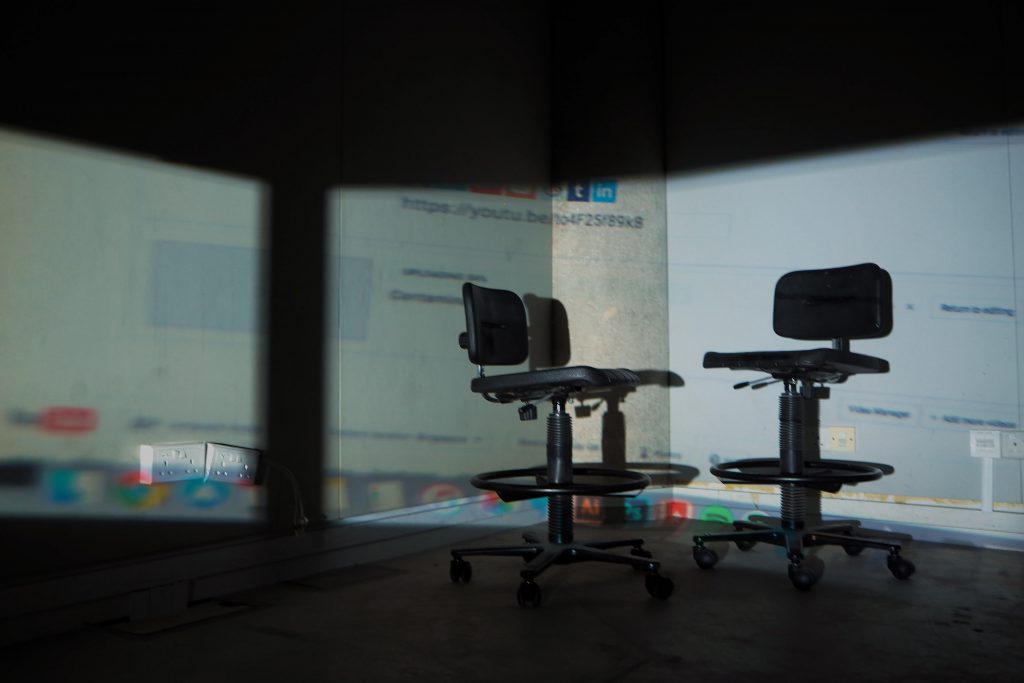
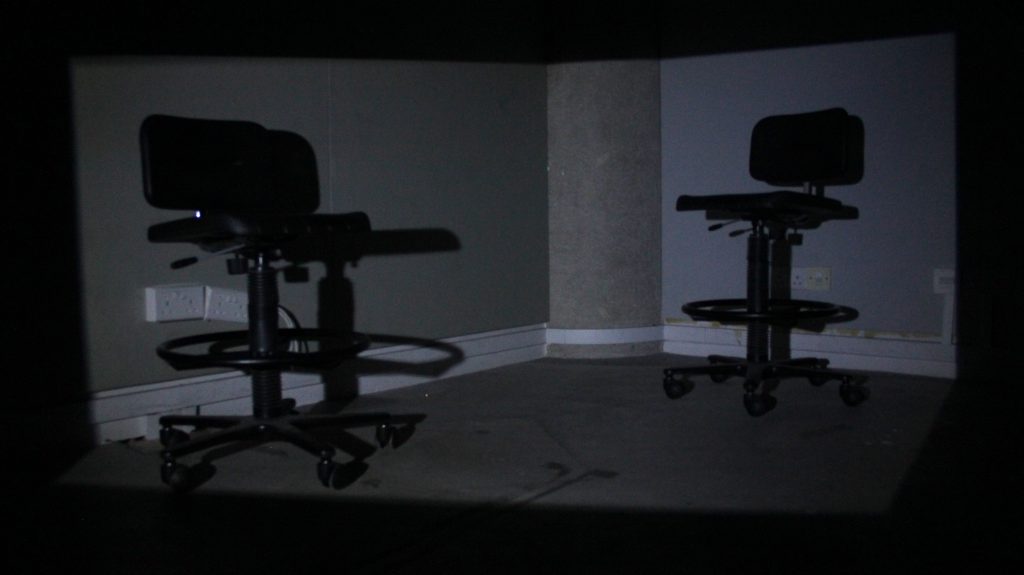
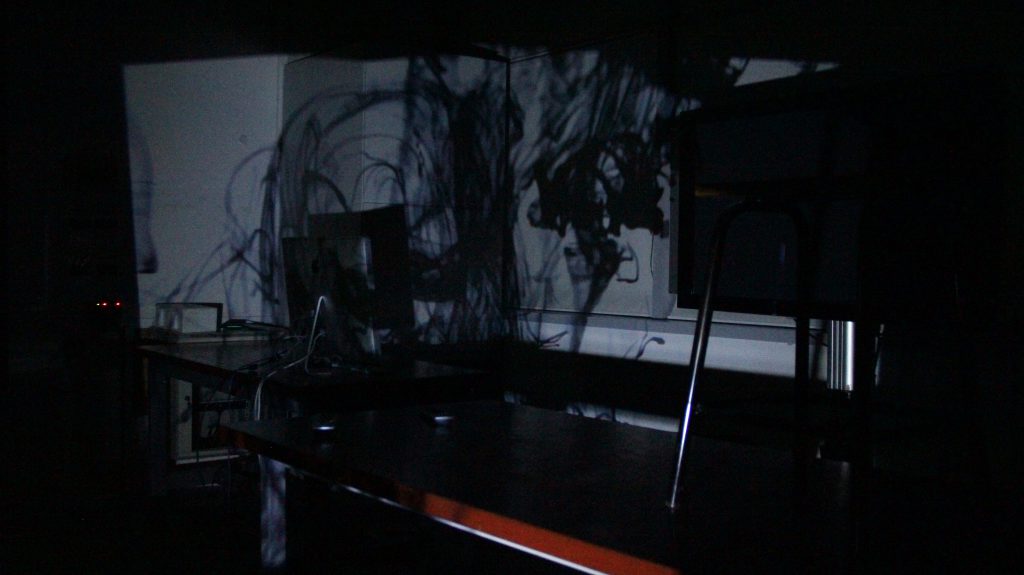
The whole thing is really slow and boring to watch but what is important is how it opens and how it closes.
The composition is purposefully cropped, one sees the edges of the projection onto this corner. It is clear that this is an artificially created setting, rather than an attempt to make real something that is not. There is an attempt to artificially alter the space.
What follows is drop after drop of black ink penetrating the projection, beginning with individual drops that blossom into flower-like forms, then slowly engulfing the projection with black. This blossoming is in harmony with the two empty chairs, which suggests human presence, implying conversation as the shadows dance across the space, eventually engulfing one in darkness before the other.
Black. The space is now contaminated with memories.
